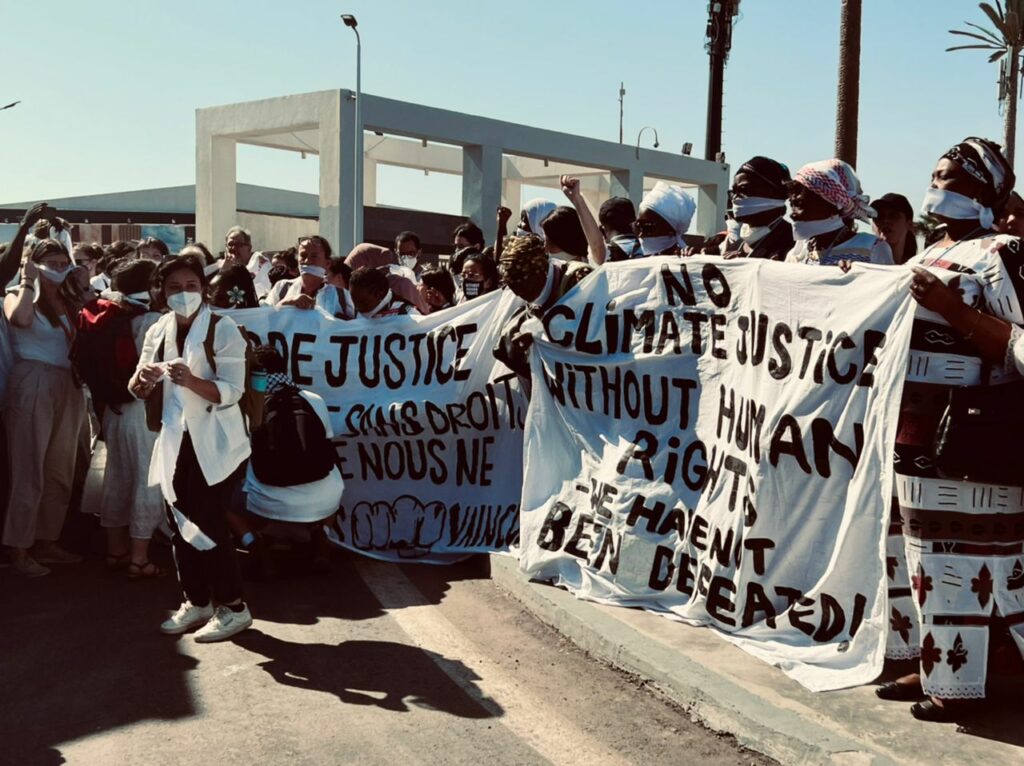There is no climate justice without gender justice
Can we address structural gender inequalities before climate change amplifies them?
By Biplabi Shrestha, Programme Director, ARROW and Esme Abbott, Communications Coordinator, Equal Measures 2030
This year, parts of Pakistan reached a sweltering 51 degrees Celsius; months later, a third of the country was underwater. Both events broke records, both events were likely amplified by climate change and both events hit women and other marginalized communities in unique and disproportionate ways. Is this the new normal?
Although there are major data gaps when it comes to the relationship between climate change and gender inequality, we do know that natural disasters are not gender-neutral and we have known it for decades.
In the aftermath of the 2004 Indian Ocean Tsunami, male survivors across Sri Lanka, Indonesia and India outnumbered surviving women by 3:1. For the Indian women that did survive, almost 9 out of 10 experienced physical violence in the following two years.
We saw the same trend a couple of years later in America as rates of domestic violence spiked following Hurricane Katrina and remained elevated for two years.
Cyclones in Mozambique and droughts across the Horn of Africa have caused similar spikes in female genital mutilation and early marriage. Even before the onset of crises, sexual and reproductive health and rights (SRHR) are one of the least prioritised rights in many countries and universal access becomes even more challenging in times of climate change and climate disasters.
Why are women and girls so vulnerable to climate change?
People who experience multiple and intersecting forms of discrimination, on account of their gender, ethnicity, caste, race, disability or migrant status are highly vulnerable in the context of climate change, largely because they are the most vulnerable in societies in general.
This is the danger of climate change – it is a threat multiplier, and perhaps “the most consequential threat multiplier for women and girls” according to the UN Special Rapporteur on violence against women and girls.
This vulnerability is rooted in a systemic and interlocking web of social, cultural and economic factors. Such factors include limited access to social safety nets, autonomy, mobility, resources and justice, along with higher rates of poverty, care burdens, dependency on (dwindling) natural resources and exposure to violence, exploitation and displacement.
Many of the inequities faced by women and girls as a result of the climate crisis will not be new, they will just be intensified and multiplied.
Let’s consider the girls around the world today that have to fetch water for their families. What will happen to them when water sources dry up due to rising temperatures?
The girls will have to walk further. They will miss more school; they may have to drop out entirely. The longer walks will expose them to higher risks of violent encounters along the way. For some there won’t be the option of a longer walk, all reachable sources will be gone, and they will be forced to trade sexual favours to access water. Others will walk further and suffer the health implications. Others still, will face health implications from drinking water that is not as clean. Some families may try to avoid these fates for their daughters altogether by forcing them into marriages.
In this scenario, the risks these girls face are not new, they just face higher exposure to them. Our job is to address these threats before they are amplified and multiplied.

Can we create a new normal?
Scoping studies recently carried out by ARROW in partnership with UN Women showed that the policy landscape on gender, climate change and disaster risk reduction is diverse and focused on the top-down approach of driving gender responsive action.
In National Policy frameworks key gender-specific issues such as sexual and reproductive health, disability and gender-based violence are often skipped in planning processes or traded off with competing priorities.
The climate related policies often ignore lived realities of people and are not backed by evidence-based advocacy and in-depth research about gender. Gender and SRHR analysis are therefore often missing from these strategies.
This year as leaders attend the United Nations Conference on Climate Change (COP27), we need them to understand that the gendered impacts of climate change are already affecting women around the world and have been for decades.
We need their stories to be heard, and we need them to be told by the women and girls closest to the issues in all of their diversities and unique experiences.
We need action now and more specifically we need states and decision makers to:
- assess gender and climate change policy frameworks to enable CSO engagement at all levels
- address the technical knowledge needs to design gender responsive, gender specific and gender transformative climate actions
- build a national framework for monitoring and evaluation (M&E) of climate change adaptation to strengthen gender mainstreaming and gender responsive programmatic action.
To produce truly sustainable solutions to climate related issues, we need a climate justice framework informed and led by the most climate-vulnerable groups in society. This framework cannot be successful unless states address the structural and systemic factors that exacerbate gender inequality and heighten vulnerability including repealing and abolishing discriminatory practices and policies.



